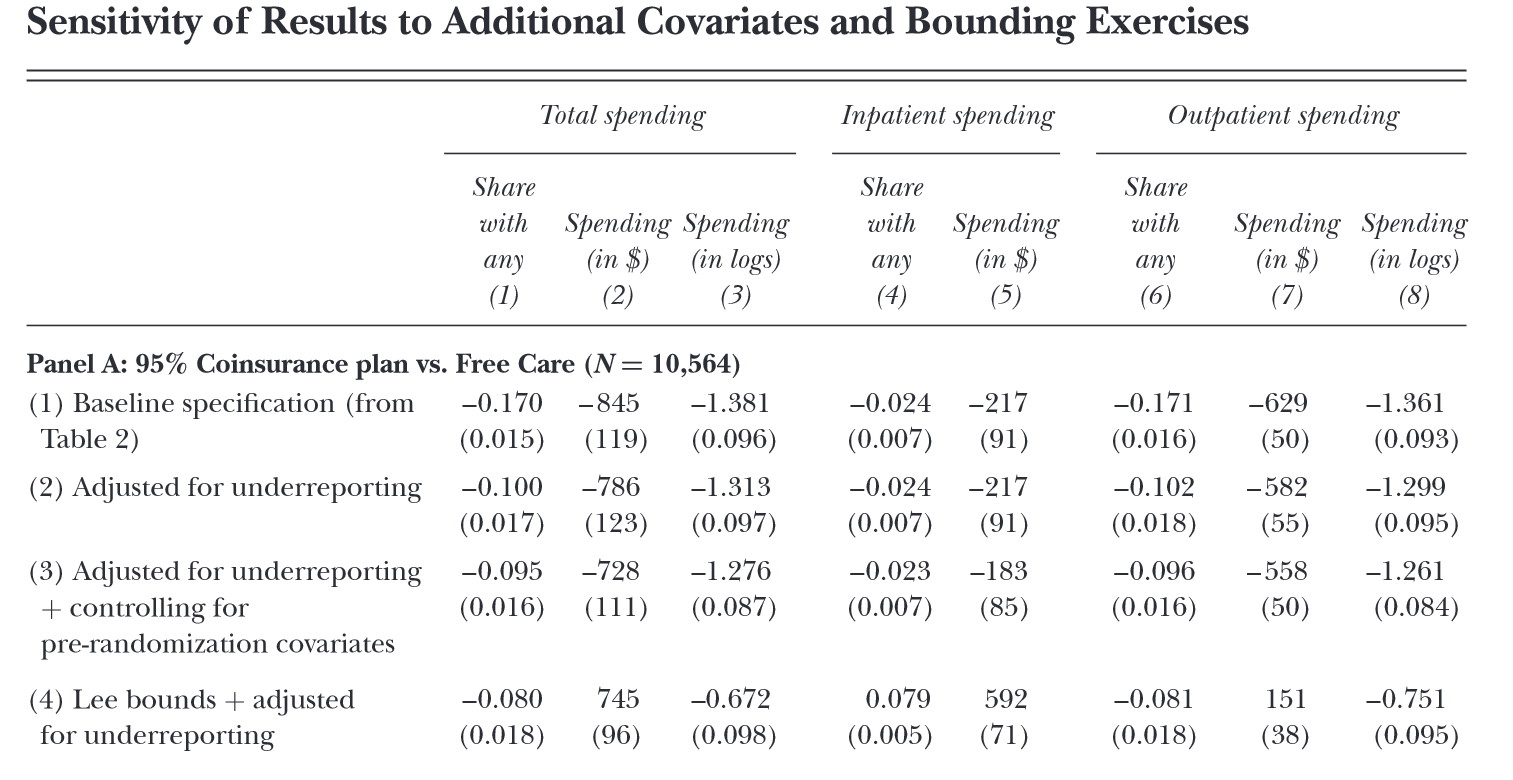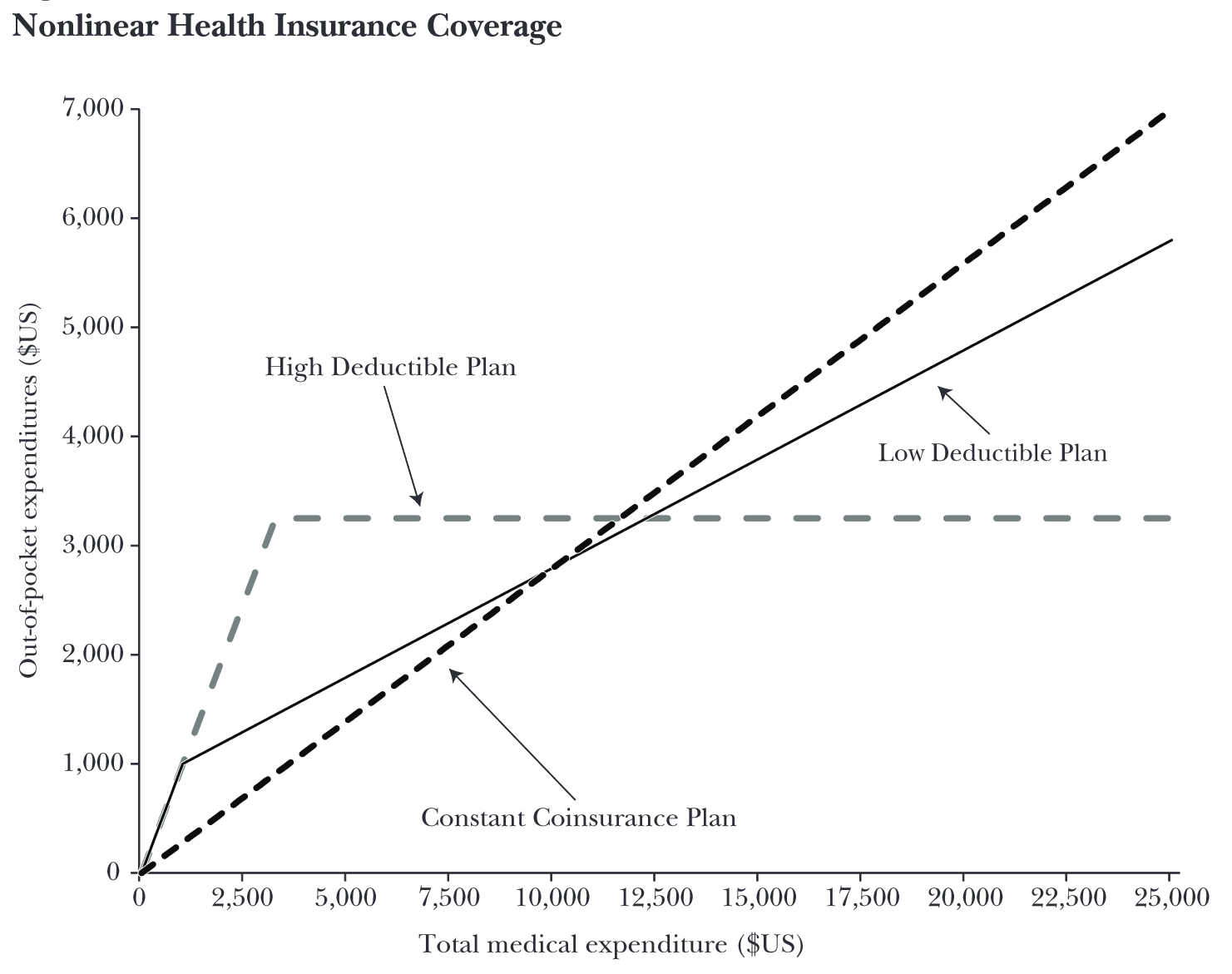Main results
- 2.1 percentage point (30%) increase in the probability hospital admission
- 8.8 percentage point (15%) increase in the probability of taking any prescription drugs
- 21 percentage point (35%) increase in the probability of having an outpatient visit
- No change (but wide confidence intervals) in ED visits
- 0.3 standard deviation increase in reported compliance with recommended preventive care (e.g., mammograms and cholesterol monitoring)
- 6.4 percentage point (25%) decline in the probability of having an unpaid medical bill sent to a collections agency
- 20 percentage point (35%) decline in having any out-of-pocket medical expenditures
- improvements in self-reported physical and mental health, overall well-being, access to, and quality of are

